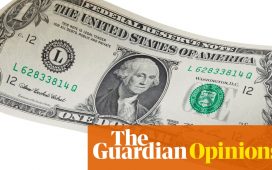High interest rates, a recent banking crisis and Washington’s fight over the debt ceiling may have shaken the US economy recently, but the US jobs market continues to show signs of strength.
The US Bureau of Labor Statistics (BLS) reported 339,000 jobs were added in May, surpassing forecasts that predicted the increase would be approximately 190,000 jobs and a sign of continued growth from the jobs market despite the Federal Reserve’s continuing efforts to cool the economy. Growth in the labor market has fluctuated over the last few months, dipping down to 165,000 jobs in March and coming back up to 253,000 jobs in April. The number of jobs added is still down compared with this time last year, when 390,000 jobs were added to the economy.
Despite more jobs being added to the economy compared to the previous month, the unemployment rate in May went up 0.3% to 3.7%. The 3.4% unemployment rate in April was the lowest seen since 1969.
The leisure and hospitality industry continued to add more jobs as the warmer weather has seen more people traveling and eating at restaurants. Construction, transportation and warehousing and social assistance also saw an increase in jobs this month.
Reports from earlier in the week indicated that while growth is slowing, the labor market remains hot. The payroll company ADP’s report of private payrolls in May showed an increase of 278,000 jobs, surpassing forecasts of 180,000. BLS’s Job Openings and Labor Turnover Survey showed that job openings unexpectedly rose in April, from 9.7m openings in March to 10.1m openings in April.
Even as the economy continues to add jobs, employers appear to be feeling some of the effects of heightened interest rates. A report from the staffing firm Challenger, Gray & Christmas showed that layoffs in May reached 80,089, a 20% increase compared with layoffs in April. Employers so far this year have cut 417,500 jobs, the largest amount in this time period since 2020. The layoffs have largely been concentrated in the tech sector, which has seen 136,800 cuts so far this year.
Fed officials in recent days have indicated that they may pause their interest-rate hike campaign at their next meeting, on 13-14 June, though future hikes are still possible. The central bank has lifted rates up to 5% to 5.25% in the period of just over a year, the highest it has been since 2007.
The Fed’s main indicator for the health of the economy is the inflation rate, which in April stood at 4.9%, nearly 3% above the Fed’s target rate of 2%. At its highest in June 2022, the inflation rate was 9%. May’s inflation rate will be released on 13 June.
But officials say the economy has yet to feel the full effects of interest rate increases, and some argue the Fed needs more time to assess how the economy is responding to the raised rates.
“We face uncertainty about the lagged effects of our tightening so far and about the extent of credit tightening from recent banking stresses. Having come this far, we can afford to look at the data and the evolving outlook to make careful assessments,” the Fed chair, Jerome Powell, said on 19 May.
Other officials have been more explicit in their belief that a pause on interest rate increases is due, and that the Fed can return to more hikes later if necessary.
“I think we can take a bit of a skip for a meeting and, frankly, if we’re going to go into a period where we need to do more tightening, we can do that every other meeting,” the Philadelphia Fed president, Patrick Harper, said on 30 May.







